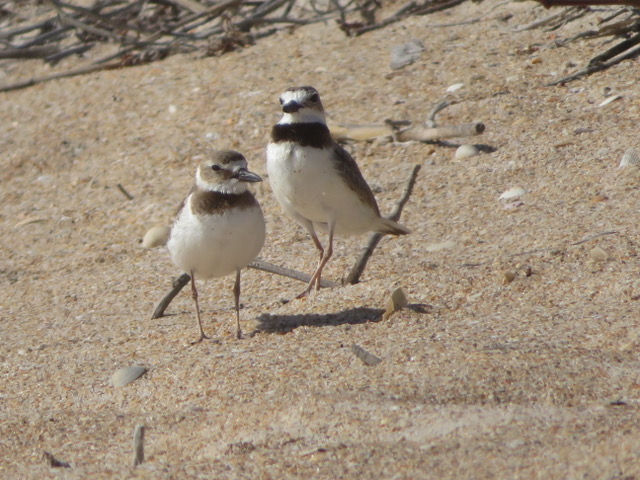Monitoring Wilson’s Plover Nesting in Canaveral
- hpastor2025
- Jun 20
- 2 min read
By Jimi Sadle
Biologist, Canaveral National Seashore

Wilson’s plovers begin to arrive at Canaveral National Seashore in early March to find a mate, stake out a claim on the beach to court, nest and rear their young.
Adult birds scratch a little depression in the sand where the female lays two or three eggs. The eggs are light brown with darker speckles and are easily camouflaged in the sand. Both the male and female adult plovers take turns incubating the eggs.
The eggs hatch approximately 30 days after being laid. Wilson’s plover chicks are considered “precocial,” which means within minutes after hatching, they can walk, run, and feed themselves. They stay close to the protection of their parents as they learn the
beach environment and how to evade predators.
These chicks are able to fly within a few weeks of hatching. Despite the short time going from an egg to becoming birds capable of flight, nest failures are very common. Eggs and chicks are highly vulnerable to predators, overheating in the Florida sun, high tides and a host of other challenges that come with nesting on the ground in open sand.
Each shorebird nesting season, a group of devoted Canaveral VIPs (Volunteers In Parks) organize and carry out nest monitoring twice a week as part of the statewide Florida Fish and Wildlife Conservation Commission Florida Shorebird Alliance (FSA) program. The FSA is a partnership network of dedicated volunteers and scientists from all around the state who collect valuable data on shorebirds and work to conduct research, collect data, provide outreach and education, and management of shorebirds and their habitats.
Surveys of these nests cover the entire 24 miles of beach and every nest they encounter is marked and monitored to determine if it was successful in producing the next generation of birds. Shorebird-nest monitors record the number of nests, collect natural history notes about the parents and the fate of the nest, and identify predation or other types of disturbance they observe.
This information allows the park to determine overall nesting success in the National Seashore and helps with management decisions. Last season, 66 nests were detected within the park boundary – the second-highest total recorded since monitoring began in 2011! Unfortunately, more than half of the nests failed. Many of the failures were due to natural causes, but about 15 percent were associated with human activity around the nest locations.
The next time you visit Canaveral National Seashore, please keep this important avian resident in mind and safely share the beach with them. Nests are very difficult to see until you are almost on top of them, so look for clues when you are picking a spot to spend on the beach. Actively monitored nests are marked with two slanted wooden stakes with green reflective tape at the top. Please do not approach these marked
areas.
If you see a little bird acting like its wing is broken, hear one calling and calling, or notice a bird just sitting very low and still on the beach, make sure to give it plenty of space because there likely is nesting going on. Fortunately, there is plenty of room for everyone, as well as the wildlife here at the Seashore!




Comments